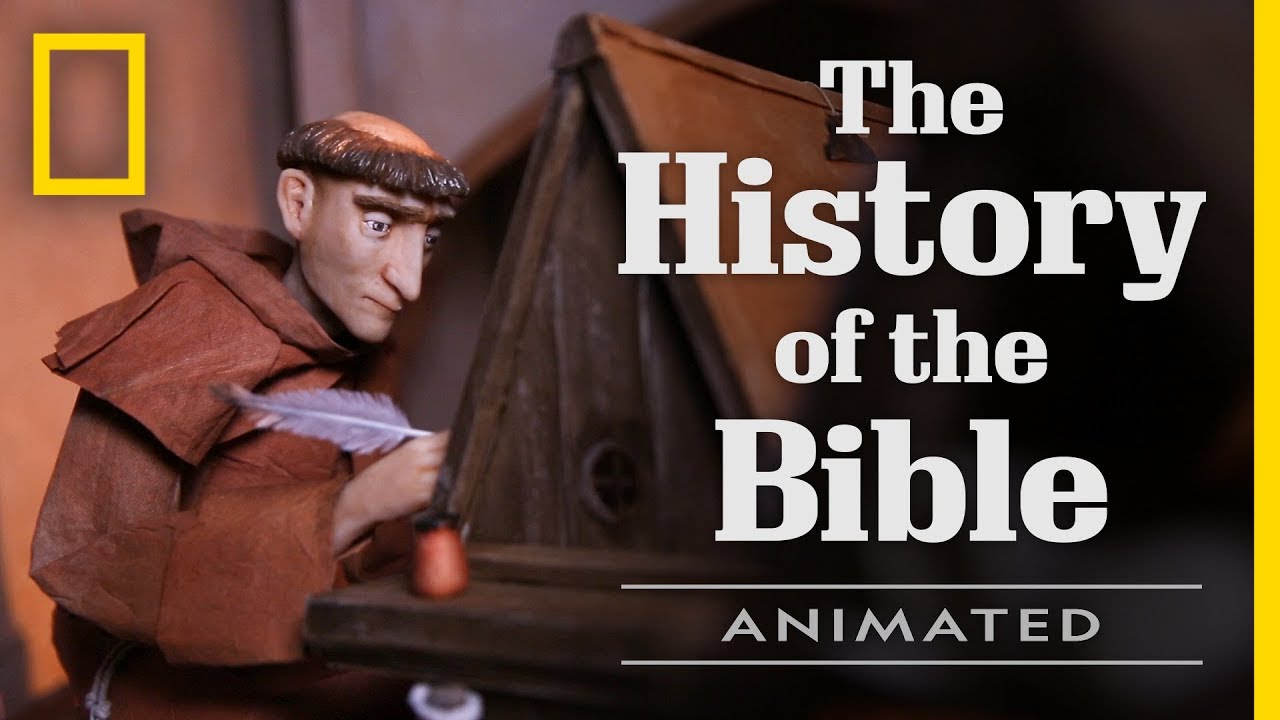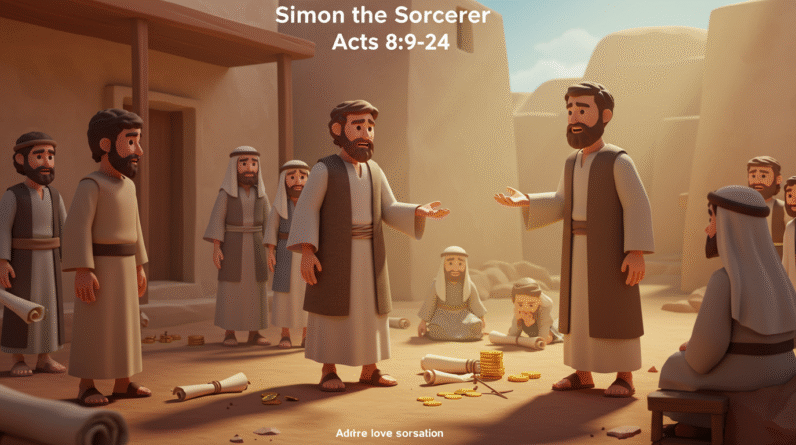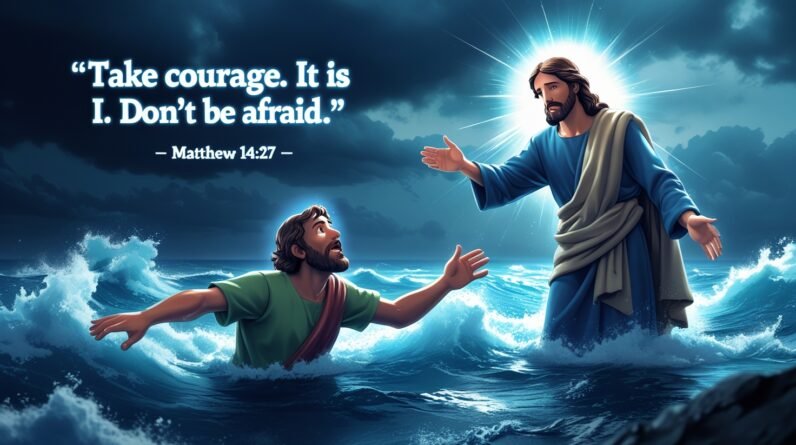Take a journey through time as you watch “The History of the Bible through Clay Animation” by National Geographic. This captivating video brings the pages of the Bible to life using clay, wire, and recycled paper. You’ll be amazed as the characters are animated frame by frame, delving into the rich and diverse history of one of the world’s most important books. From scrolls to codices, the Bible has evolved over time, and the discovery of the Dead Sea Scrolls, the oldest biblical texts ever found, has provided invaluable insights into the lives of the people who recorded these stories over 2,000 years ago. Join National Geographic on this fascinating adventure and witness the wonders of the past come alive before your eyes.
Join the three Bedouin shepherds as they stumble upon the greatest archaeological discovery of the 20th century along the shores of the Dead Sea. Unearthed were the first of the Dead Sea Scrolls, handwritten on durable animal skin and papyrus. These scrolls, composed mostly in Hebrew, shed light on the early versions of the Bible’s stories, offering a glimpse into the lives of those who recorded them. From the labor-intensive process of hand-copying books during the medieval period to the invention of the printing press that revolutionized book production, the Bible has transformed over time, ultimately becoming the best-selling book of all time. Dive deep into this remarkable tale and ponder what other treasures may still be waiting to be discovered.
Introduction to Clay Animation
Definition of Clay Animation
Clay animation, also known as claymation, is a stop-motion animation technique that uses clay or modeling clay to create characters and objects. It involves taking a series of photographs with small changes in each frame, and then playing them in rapid succession to create the illusion of movement. Clay animation has been used in various forms of media, including films, television shows, and advertisements. It allows artists to bring their creations to life in a unique and visually appealing way.
History and Evolution of Clay Animation
The history of clay animation can be traced back to the early 1900s when pioneer animators such as Willis O’Brien and Ladislas Starevich began experimenting with the technique. O’Brien is best known for his work in the film “The Lost World” (1925) and “King Kong” (1933), where he used stop-motion animation with clay models to create realistic-looking dinosaurs and monsters.
Throughout the years, clay animation has continued to evolve and be refined. It gained popularity in the 1970s with the advent of television series like “Gumby” and “The Adventures of Morph.” These shows showcased the versatility of clay animation and its ability to captivate audiences with its unique style and charm.
Today, clay animation has become even more accessible and widespread with the advancement of technology. Digital tools and software have made it easier for artists to create clay animation using a combination of traditional techniques and digital editing. This has opened up new possibilities for storytelling and creative expression in the world of animation.
The Bible and its Different Forms
The Bible in Scrolls
Before the invention of the printing press, the Bible existed in various forms. One of the earliest forms was the use of scrolls. The Dead Sea Scrolls, discovered in the mid-20th century, are some of the oldest biblical texts ever found. These scrolls were handwritten on durable animal skins with some written on papyrus. The text was mostly composed in Hebrew from right to left, with sheets written in columns and then sewn together to create a single scroll for safekeeping.
The Dead Sea Scrolls
The discovery of the Dead Sea Scrolls provided important insights into the early versions of the Bible and the lives of the people who recorded these stories over 2,000 years ago. The scrolls were a significant archaeological find, shedding light on the historical and cultural context of biblical texts. They gave researchers a deeper understanding of the development and transmission of the Bible’s stories.
Manuscripts and Codices
As time passed, scrolls were gradually replaced by the codex as the format for Christian manuscripts. Codices were made by folding sheets of papyrus or parchment and stitching them together, creating a more compact and convenient form of documentation. The introduction of codices revolutionized book production and facilitated the dissemination of biblical texts.

This image is property of i.ytimg.com.
Medieval Book Production
Handwritten Books
During the medieval period, books were predominantly reproduced by hand. Monks and scribes dedicated their days to meticulously copying texts in Latin and Greek. This process required great skill and training, as every word and illustration had to be carefully transcribed.
Illumination and Illustrations
In addition to the written text, medieval books often featured elaborate illuminations and illustrations. Monks and artists used various pigments and techniques to decorate the pages, including gold leaf, vibrant colors, and intricate designs. These illuminations not only enhanced the aesthetic appeal of the books but also served as visual aids to help readers understand the texts.
Monastic Scribes
Monastic scribes played a crucial role in the production of medieval books. They were responsible for copying and preserving important texts, including the Bible. Their meticulous work ensured the transmission of knowledge and cultural heritage through the centuries. Without their dedication and skill, many of these invaluable manuscripts would have been lost to time.
The Role of the Printing Press
Invention and Impact
The invention of the printing press by Johannes Gutenberg in the 15th century revolutionized the production of books. The printing press allowed for faster and more efficient printing, making books more readily available to a wider audience. This technological advancement had a significant impact on the dissemination of religious texts, including the Bible.
Transition to Modern World
The printing press marked a transition from the Middle Ages to the early modern world. It democratized access to information and knowledge, allowing people from different walks of life to engage with texts that were previously limited to the elite. The widespread availability of printed Bibles played a crucial role in religious reformations and the spread of Christianity.
Availability to the Masses
Thanks to the printing press, the Bible became one of the first books to be mass-produced. It quickly became the best-selling book of all time, a testament to its enduring significance and widespread appeal. The availability of printed Bibles allowed individuals to study the scriptures, deepen their faith, and engage with the stories and teachings contained within its pages.
This image is property of images.unsplash.com.
The Bible as the Best-Selling Book
Significance of the Bible
The Bible holds immense cultural, religious, and historical significance. It is considered a sacred text by billions of people around the world, serving as the foundation of various religious traditions, including Judaism and Christianity. The Bible contains a vast collection of stories, teachings, and moral guidelines that continue to shape the beliefs and values of individuals and societies.
Important Stories and Events
Within its pages, the Bible recounts important stories and events that have had a profound impact on human history. These stories include the creation of the world, Noah’s Ark and the Flood, Moses receiving the Ten Commandments, the construction of Solomon’s Temple, the birth of Jesus, his crucifixion and resurrection, and the coming of the Holy Spirit to the Apostles, among many others.
Study of Ancient Manuscripts
The study of ancient manuscripts provides valuable insights into the historical and cultural context of the Bible’s stories. Scholars and researchers have dedicated their lives to analyzing and deciphering these manuscripts, uncovering new interpretations and shedding light on the origins and evolution of religious texts. The search for more manuscripts and ancient versions of the Bible’s stories continues to this day, as there may be hidden treasures waiting to be discovered.
Clay Animation in Documenting Bible History
Utilizing Clay Animation
Clay animation has become an innovative way to document and bring to life the history of the Bible. By using clay, wire, and recycled paper, animators can create realistic-looking characters and objects that resonate with audiences. Clay animation allows for a unique and creative portrayal of biblical stories, capturing the imagination and engaging viewers in a visually compelling manner.
Frame-by-Frame Motion
The frame-by-frame motion of clay animation adds a sense of fluidity to the characters and objects on screen. Each frame is meticulously crafted and captured to create a smooth and seamless movement. This technique enables clay animators to convey emotions, actions, and details with remarkable precision, enhancing the storytelling experience.
Materials and Techniques
Clay animation relies on the use of clay or modeling clay as the primary material for creating characters and objects. The animator molds the clay into various shapes and sizes, adding details and textures to bring them to life. Wire armatures are often used to provide support and enable movement. Additional materials, such as recycled paper or fabric, can be incorporated to enhance the visual appeal and authenticity of the animation.
This image is property of images.unsplash.com.
National Geographic’s Clay Animation
National Geographic’s Expertise
National Geographic, a renowned media organization, has explored the history of the Bible through the medium of clay animation. Drawing on their team of expert scientists, photographers, journalists, and filmmakers, National Geographic strives to provide accurate and insightful representations of the Bible’s stories and historical context.
Exploring Bible’s History
Using clay animation, National Geographic takes viewers on a journey through the history of the Bible. They delve into the stories and events described in the scriptures, highlighting their cultural and historical significance. Through their animations, National Geographic aims to convey the richness and complexity of the Bible’s narratives, making them accessible and engaging to a wide audience.
Bringing Characters to Life
Through their clay animations, National Geographic brings the characters of the Bible to life. The careful molding and movement of clay figures create a sense of realism and emotional connection with the viewer. This approach allows audiences to connect with biblical figures on a deeper level, fostering a greater understanding and appreciation for their stories and the lessons they impart.
The History of the Bible in Animation
Conveying the Bible’s Stories
Animation has long been utilized as a medium for conveying the stories and teachings of the Bible. From traditional hand-drawn animation to modern techniques like clay animation, animators have found creative ways to visually represent biblical narratives. Animation allows for the depiction of fantastical events, the portrayal of supernatural beings, and the exploration of metaphorical and symbolic elements present in religious texts.
Enhancing Engagement
Animation has the power to captivate and engage viewers in ways that traditional storytelling cannot. The combination of visual imagery, movement, and sound can evoke emotions and deeply resonate with audiences. By presenting the Bible’s stories in an animated format, creators can enhance the level of engagement and draw viewers into a dynamic and immersive experience.
Preserving Cultural Heritage
Animation serves as a valuable tool for preserving and celebrating cultural heritage, including the history and stories articulated in the Bible. By depicting these narratives through animation, cultural and historical knowledge can be passed down through generations. Animation allows for the reinterpretation and reimagining of biblical tales, ensuring their continuity and relevance in contemporary society.
This image is property of images.unsplash.com.
The Significance of Clay Animation
Visualizing History
Clay animation provides a unique and visually captivating way to visualize history, particularly the history of the Bible. By using clay and other materials, animators can recreate characters, settings, and events, giving viewers a tangible and immersive experience of the past. Clay animation helps to bridge the gap between ancient stories and the modern audience, fostering a deeper connection and understanding of historical events.
Educational Tool
Clay animation serves as an effective educational tool for teaching and learning about the Bible and its history. Through animated retellings of biblical stories, viewers can gain insights into important events, characters, and themes. The engaging nature of clay animation makes the learning process enjoyable and memorable, encouraging further exploration and study.
Promoting Cultural Understanding
Clay animation has the potential to promote cultural understanding and appreciation by showcasing the diverse traditions and beliefs surrounding the Bible. Through the medium of animation, viewers can gain insights into different cultural interpretations and representations of biblical stories. This fosters empathy, respect, and a broader understanding of the rich tapestry of human experiences and beliefs.
Conclusion
The Everlasting Impact of the Bible
The Bible has had an enduring impact on human history, culture, and spirituality. It continues to shape the beliefs, values, and moral frameworks of individuals and societies worldwide. The stories and teachings contained within its pages provide guidance, inspiration, and a sense of purpose for millions of people.
Clay Animation as a Powerful Medium
Clay animation serves as a powerful medium for documenting and exploring the history of the Bible. Its ability to visually represent biblical narratives in a unique and engaging way allows for greater accessibility and understanding. Whether through National Geographic’s expert animations or other creative endeavors, clay animation breathes new life into ancient stories, making them relevant and compelling for contemporary audiences.










